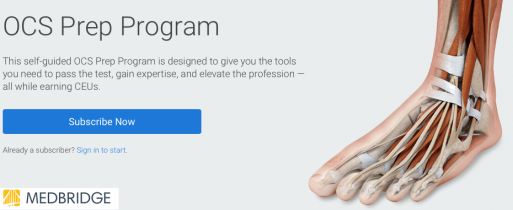Purpose: Identify patients with low back pain who likely will improve with spinal manipulation.
Stage of CPR Development: Validated (Childs et al., 2004); Invalidated (Hancock et al., 2008)
Rule:
1. Duration of symptoms < 16 days
2. At least one hip with > 35° of internal rotation
3. Lumbar hypomobility
4. No symptoms distal to the knee
5. FABQ-W score < 19
Derivation Study (Flynn et al., 2002):
| Variables | Sensitivity | Specificity | +LR | Prob of Success |
| 1 | 1.00 | 0.03 | 1.03 | 46% |
| 2 | 1.00 | 0.15 | 1.18 | 49% |
| 3 | 0.94 | 0.64 | 2.61 | 68% |
| 4 | 0.63 | 0.97 | 24.38 | 95% |
| 5 | 0.19 | 1.00 | ∞ | 100% |
Validation Study (Childs et al., 2004):
| Group | Disability (p-Value) | |
| One Week | Manipulation vs Exercise | < 0.001 |
| Manipulation (+CPR) vs Manipulation (-CPR) | < 0.001 | |
| Manipulation (+CPR) vs Exercise (+CPR) | < 0.001 | |
| Exercise (+CPR) vs Exercise (-CPR) | > 0.2 | |
| Four Weeks | Manipulation vs Exercise | 0.006 |
| Manipulation (+CPR) vs Manipulation (-CPR) | < 0.001 | |
| Manipulation (+CPR) vs Exercise (+CPR) | 0.003 | |
| Exercise (+CPR) vs Exercise (-CPR) | 0.127 | |
| Six Months | Manipulation vs Exercise | 0.001 |
| Manipulation (+CPR) vs Manipulation (-CPR) | 0.014 | |
| Manipulation (+CPR) vs Exercise (+CPR) | 0.008 | |
| Exercise (+CPR) vs Exercise (-CPR) | 0.112 |
| Variables | +LR | -LR | NNT (1 week) | NNT (4 weeks) |
| 3 | 13.2 | 0.1 | 1.3 | 1.9 |
Validation Study (Hancock et al., 2008):
| Group | Pain Scale (p-Value) | Disability (p-Value) | |
| One Week | Manipulation | 0.976 | 0.102 |
| Status on CPR | 0.077 | 0.069 | |
| Manipulation X CPR Status | 0.578 | 0.205 | |
| Two Weeks | Manipulation | 0.306 | 0.014 |
| Status on CPR | 0.015 | 0.033 | |
| Manipulation X CPR Status | 0.843 | 0.091 | |
| Four Weeks | Manipulation | 0.754 | 0.103 |
| Status on CPR | 0.103 | 0.057 | |
| Manipulation X CPR Status | 0.645 | 0.366 | |
| Twelve Weeks | Manipulation | 0.592 | 0.066 |
| Status on CPR | 0.303 | 0.015 | |
| Manipulation X CPR Status | 0.919 | 0.062 |
Supine vs Side-lying vs Non-Thrust Manipulation (Cleland et al., 2009):
| Group | Pain Scale (Mean Diff) | Disability (Mean Diff) | |
| One Week | Supine Thrust vs Side-lying Thrust | 0.61 | 3.51 |
| Supine Thrust vs Non-thrust | 2.07 | 11.45 | |
| Side-lying Thrust vs Non-thrust | 1.46 | 7.94 | |
| Four Weeks | Supine Thrust vs Side-lying Thrust | 0.47 | 1.50 |
| Supine Thrust vs Non-thrust | 1.79 | 14.23 | |
| Side-lying Thrust vs Non-thrust | 1.32 | 12.73 | |
| Six Months | Supine Thrust vs Side-lying Thrust | 0.19 | -0.85 |
| Supine Thrust vs Non-thrust | 0.58 | 5.97 | |
| Side-lying Thrust vs Non-thrust | 0.39 | 6.81 |
Manipulation vs Mechanical Diagnosis and Therapy (Schenk et al., 2013):
| Between Group Changes | Manipulation (CPR+) | MDT (CPR+) | p-Value |
| Disability (Mean Change) | 11.13 | 14.56 | 0.31 |
| Pain Score (Mean Change) | 9.56 | 15.25 | 0.08 |
| 50% Reduction in Disability | 2/8 | 10/18 | 0.155 |
Manipulation vs Non-Thrust Manipulation (Learman et al., 2014):
| Between Group Changes | p-Value |
| Disability | 0.55 |
| Pain Score | 0.55 |
| Patient Perception of Recovery | 0.98 |
| 50% Reduction in Disability | 0.98 |
CPR Selected vs Therapist Selected Non-Thrust Manipulation (Donaldson et al., 2016):
| Timeframe | Disability (Mean Diff) | Disability (p-Value) | Pain Score (Mean Diff) | Pain Score (p-Value) |
| Visit Four | 4.5 | 0.12 | 0.7 | 0.13 |
| One Month | 3.7 | 0.17 | 0.4 | 0.47 |
| Six Months | 1.7 | 0.55 | 0.4 | 0.85 |
Continued Learning…
Continued Reading…









The Hancock study “Invalidating” the original CPR is deceptive, They did not provide a HVLAT to every one of the SMT patient’s, instead relied on the physical therapist’s application of a different algorithm.
“Patients received SMT according to a treatment algorithm (Appendix 1) developed by the researchers based on the views of expert clinicians and researchers in the field [12, 18, 21]. The algorithm permitted the use of low and/or high velocity procedures that aimed to produce motion at the joints of the lumbar spine, thoracic spine, sacroiliac joint, pelvis and hip, and involved forces generated by the therapist. Consistent with contemporary clinical practice, the therapist adjusted the treatment to the clinical presentation [17, 21, 26, 29] of the patient rather than applying the same treatment to all patients. A review of patient records revealed that most participants received a variety of low velocity techniques (97%) with a small proportion also receiving high velocity thrust techniques (5%).”
How can they claim to invalidate a CPR when they do not provide the same treatment as the original CPR?
LikeLike
Thank you for sharing this information.
LikeLike